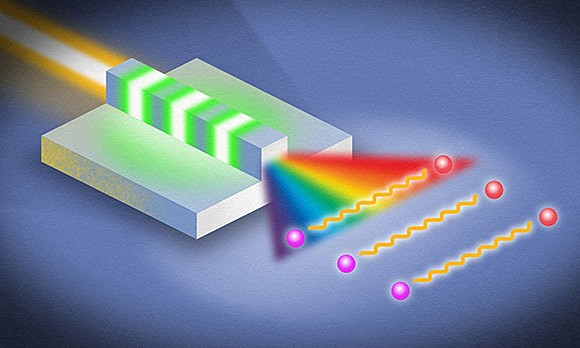Qiang Lin, professor of electrical and computer engineering, and PhD students in his lab, generate an incredibly large bandwidth using a thin-film nanophotonic device they’ve created

Qiang Lin, professor of electrical and computer engineering, and PhD students in his lab have taken advantage of quantum entanglement to generate an incredibly large bandwidth using a thin-film nanophotonic device they’ve created. The breakthrough, described in Physical Review Letters, could lead to:
- Enhanced sensitivity and resolution for experiments in metrology and sensing, including spectroscopy, nonlinear microscopy, and quantum optical coherence tomography.
- Higher dimensional encoding of information in quantum networks for information processing and communications.
“This work represents a major leap forward in producing ultrabroadband quantum entanglement on a nanophotonic chip,” Qiang says. “And it demonstrates the power of nanotechnology for developing future quantum devices for communication, computing, and sensing.” Hats off to Qiang, lead author Usman Javid, and co-authors Jingwei Ling, Mingxiao Li, and Yang He of electrical and computer engineering, and Jeremy Staffa of optics. Read more.
Hajim Memo 1108
